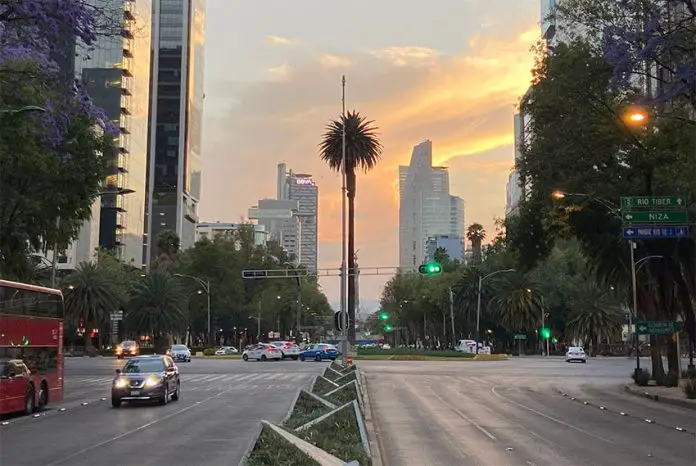A palm tree planted on Mexico City’s emblematic Paseo de la Reforma avenue over 100 years ago will be removed this Sunday because it is infected with a fungal disease commonly known as pink rot.
Located at the Glorieta de la Palma (Palm Tree Roundabout) less than a kilometer from the Angel of Independence monument, the tree was planted during the Porfiriato, the period between 1884 and 1911 when Porfirio Díaz was president.
The first known photo of the iconic palm tree was taken in 1920, the newspaper Reforma reported. The Mexico City government estimated in 2013 that the palmera could live another 200 years but it became infected with pink rot, also known as Gliocladium Blight, in 2019.
The disease causes bud, stem, and trunk rot on infected palms, according to Bartlett Tree Experts, a United States-based firm that describes itself as the world’s leading scientific tree and shrub care company. It attacks trees that are already weak or stressed.
Mexico City Mayor Claudia Sheinbaum said experts determined that the tree couldn’t be saved. An event will be held on Paseo de la Reforma Sunday to bid farewell to the palm before its removal.
El registro fotográfico más antiguo de la palma de Paseo de Reforma es de 1920. No se tiene la fecha exacta de cuando fue plantada. Posiblemente finales del s. XIX o inicios del XX. Lo que sí sabemos es que la glorieta data de 1864 a partir del proyecto original de Luis Bolland. pic.twitter.com/IQkSTWtp7Z
— Tlatoani_Cuauhtemoc (@Cuauhtemoc_1521) April 22, 2022
“We’re going to do a symbolic removal because of what it represents in the history of the city,” Sheinabuam said.
“We will pay tribute to the palm tree that was on Paseo de la Reforma for more than 100 years,” she wrote on Twitter.
Sheinbaum said that citizens will have the opportunity to have their say about what kind of tree should be planted in its place and whether the name of the roundabout should change.
“It could be a palm tree, a ceiba, a jacaranda, an ash tree [or] an ahuehuete [Montezuma cypress],” she said.
For a period of one week starting Monday, citizens will be able to vote for their preferred species on Plaza Pública, the Mexico City government’s participatory democracy website.
After removal, the trunk of the diseased palm will be transported to the Nezahualcóyotl nursery in the Xochimilco borough of the capital where it will be treated to neutralize the pathogen before it is handed over to a group of young artists who will turn it into a work of art.
Héctor Benavides, an expert with the National Forestry, Agriculture and Livestock Research Institute, said that the palm tree is one of 3,750 in Mexico City that are infected with pink rot. Fungicides have been injected into other palmeras in an attempt to save them.
Benavides said that a lack of rain during the past two years accelerated the drying out of diseased palm trees, as occurred with the Glorieta de la Palma specimen.
“They’re subject to water stress. … When they don’t have [enough water], they become weak,” he said.
With reports from Reforma
